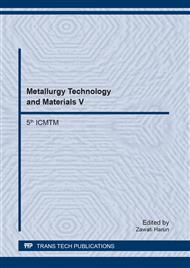p.142
p.146
p.151
p.157
p.162
p.167
p.174
p.179
p.185
The Influence of Superplasticizers Based on Modified Acrylic Polymer and Polycarboxylate Ester on the Plasticizing Effect of Cement Paste
Abstract:
The article aims to present a research into the impact of the dosage and effectiveness of superplasticizers based on modified acrylic polymer and polycarboxylate ester (from 0 to 1.2 %) on rheological properties of the cement pastes (yield stresses and plastic viscosities), of different testing times after mixing (from 0 to 90 min). Materials used in the study: Portland cement CEM I 42.5 R, superplasticizers SP1 (modified acrylic polymer based), SP2 (polycarboxylate ester based), and water. Investigation was carried out using rotational rheometer Rheotest RN4.1 with coaxial cylinders. The tests revealed that superplasticizer SP2 is more effective than SP1 – cement paste (W/C = 0.30) exhibits better flowability and improved rheological qualities. Superplasticizers SP1 and SP2 exhibit different levels of plasticizing effectiveness and ability to retain the effect’s duration. Due to the increase in the dosage of superplasticizers SP1 and SP2 from 0 to 1.2 %, plasticizing effect increases. It is also observed that larger dosage of SP1 (0.6-1.2 %) results in slower increase in plasticizing effects until the 90 min margin. In conclusion, from the start of mixing until the 90 min margin, the best plasticizing effect and its retention achieved by superplasticizer SP2. Recommended SP2 dosage – from 0.6 to 0.8 %.
Info:
Periodical:
Pages:
167-173
Citation:
Online since:
August 2017
Authors:
Price:
Сopyright:
© 2017 Trans Tech Publications Ltd. All Rights Reserved
Share:
Citation:


